If you hunt for upland birds, you know. Having a gun that fits enhances your ability to bag more birds. We checked with several Syren pro-staff and ambassadors to see why. We also tapped into the knowledge of our Facebook group users, at the special Syren Owners page.
Sponsored by Syren USA
We reached out to pro-staffers and Syren ambassadors Kate Ahnstrom, Courtney Bastian, Hannah Nokonow and Jennifer Wapenski. These four women epitomize ethics and etiquette afield in upland situations. In case you don’t know them, here are their brief bios.

Kate Ahnstrom owns and operates Virginia Shooting Sports and guides field hunts in central Virigina. She is a wing-shooting and sporting clay instructor, trained in methods of instructing from the Paragon School of Sporting.
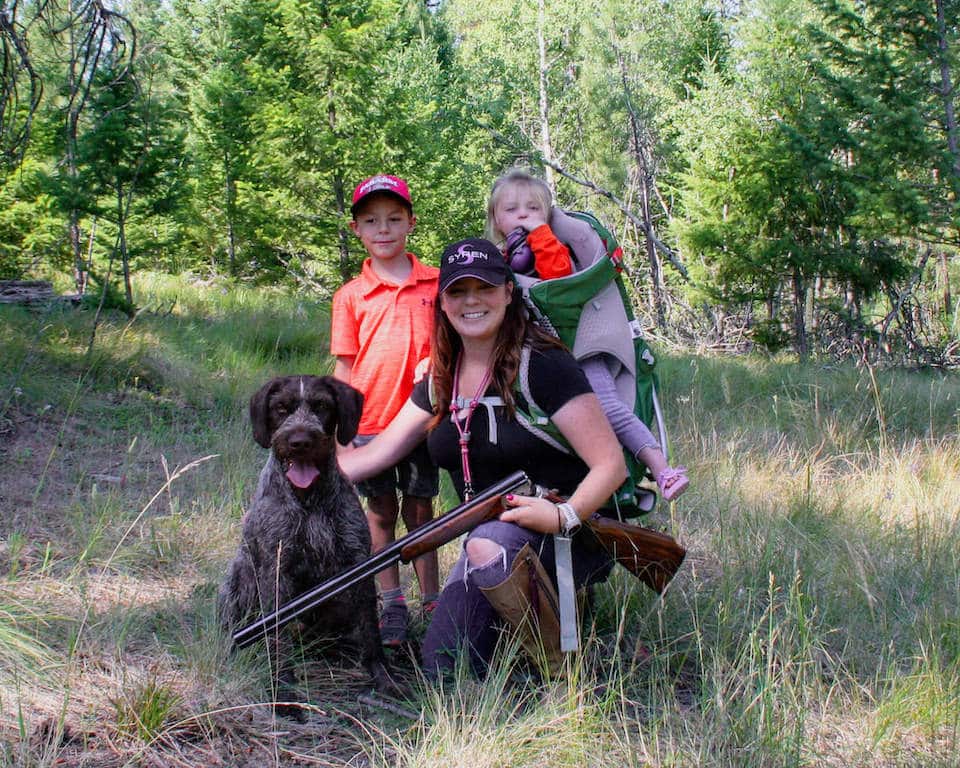
Courtney Bastian hails from Montana, where she trains bird dogs and guides hunters. She is the host of “The Birddog Babe” podcast, and co-host of “HER Upland.”
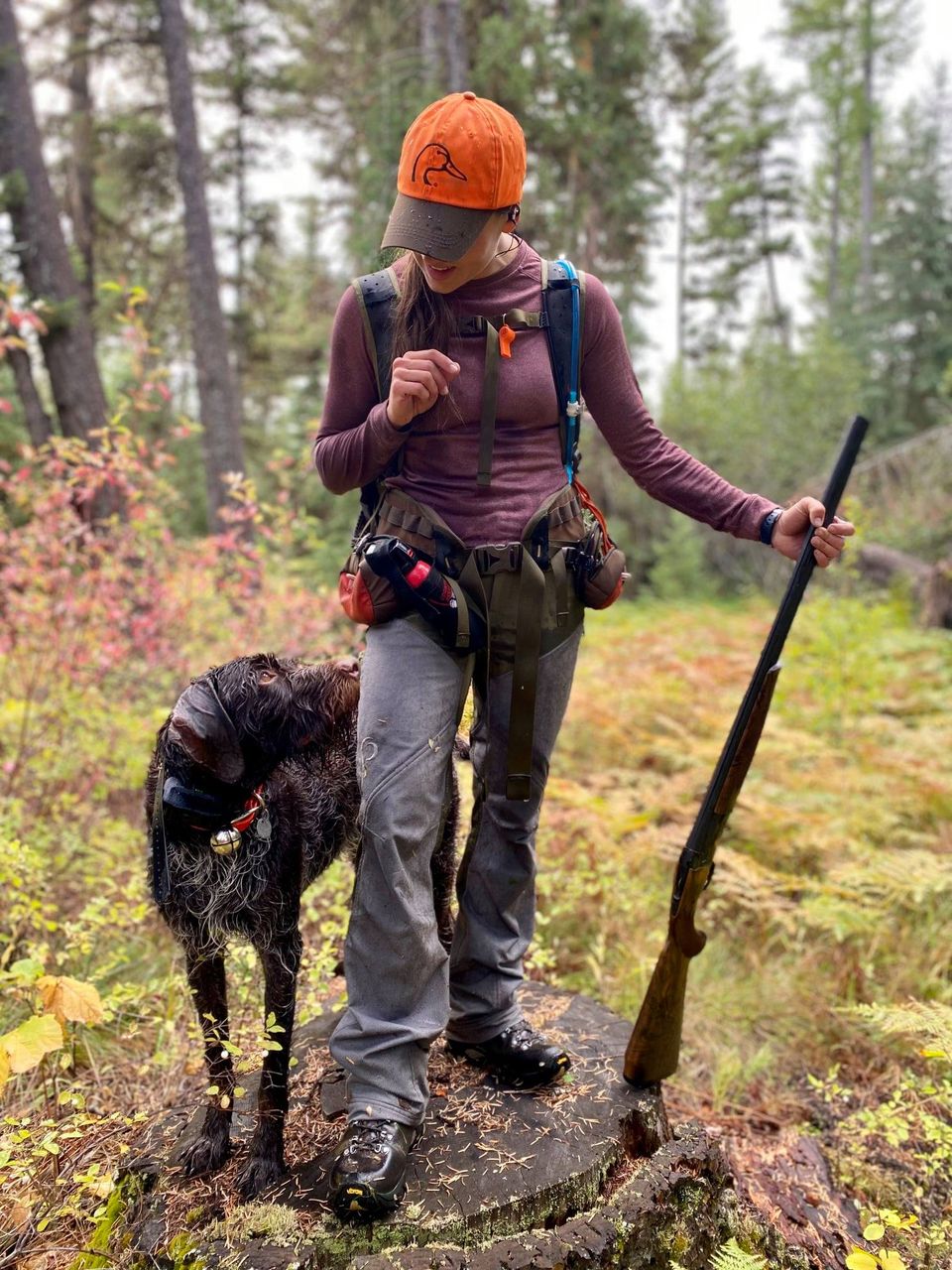
Hannah Nikonow is the other host with Courtney of “HER Upland.” Hannah also is a contributing writer for a number of outdoor publications, including “Pheasants Forever ” and “Backcountry Hunters & Anglers.”
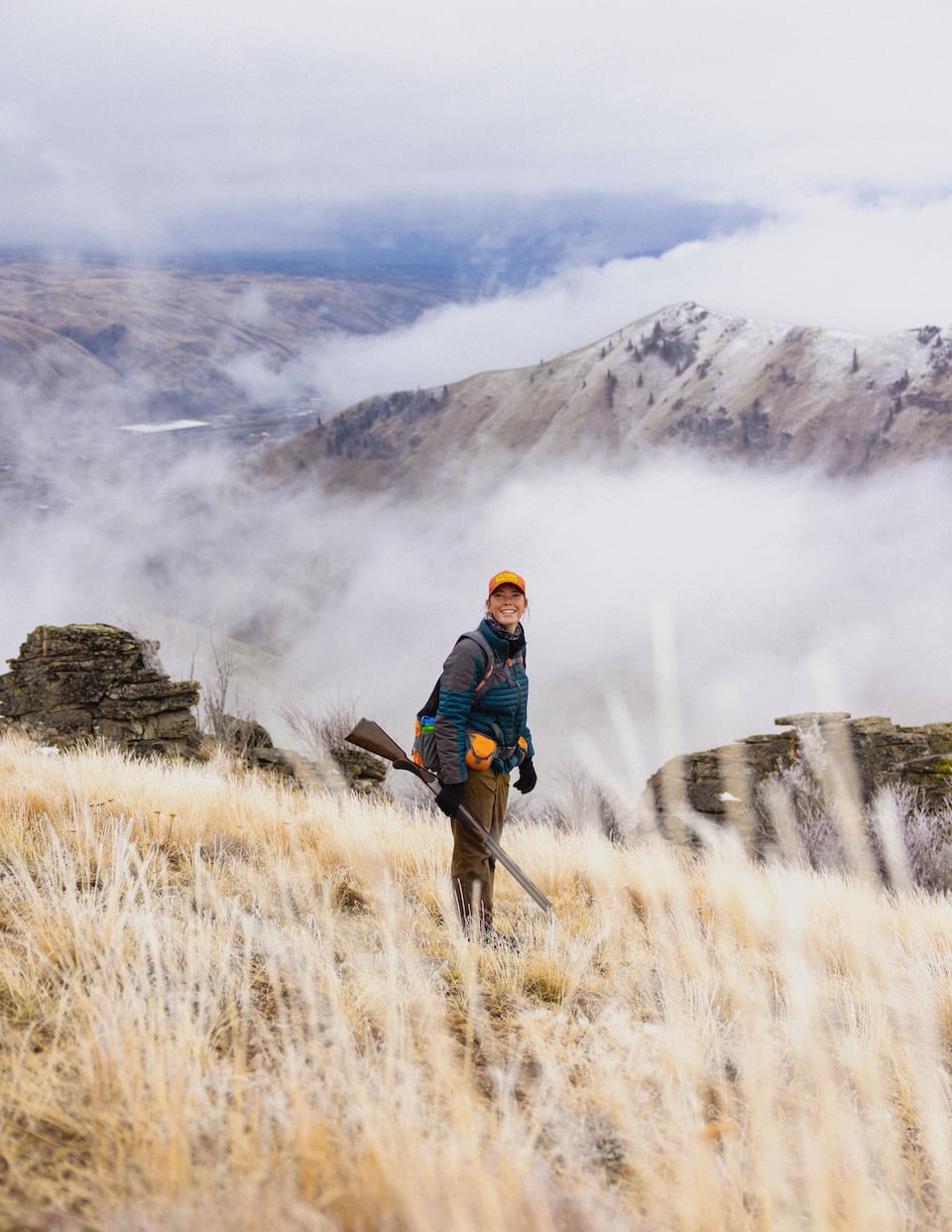
Jennifer Wapenski is a contributing writer to “Project Upland” magazine and director of operations for Northwoods Collective (Project Uplands creators). Jennifer contributes to other publications as well, including “Outdoor Life.” She hosts the “Hunting Dog Confidential” podcast on the Project Upland Network.
Here’s what the four women hunters had to say in regard to these questions:
Question #1: Why does it matter? What’s the big deal about having a gun that fits?
Kate: Shotguns were originally created with gun fit in mind because they are a pointing gun and not a gun for aiming. If you aren’t able to have the gun point where you are looking, you won’t be able to make contact with the target.
Courtney: Having a shotgun that fits not only provides for a more comfortable experience, but it also ensures for a more successful one. For a decade I used a shotgun that didn’t fit me, even after having the stock chopped down. I was still able to put birds in the bag with it, but it was uncomfortable and awkward. I was canting my head to get into my gun, which made it difficult to move my gun to follow the bird, and I wasn’t shooting with my eyes level. Upland hunting requires quick shooting, therefore having a properly fit shotgun allows for a smooth transition for a fast, accurate mount. If shotgun fit is off, it won’t point exactly where you want it to, resulting in a missed shot, and may cause bruising on the forearm and shoulder.
Hannah: We work extremely hard training our dogs, scouting habitat, earning vacation time and access, and traveling long distances to find good bird numbers. To have a gun that doesn’t fit and then results in poor wingshooting accuracy defeats much of the effort, preparation and time. Very little beats the feeling of accomplishment and joy when you cleanly hit a wild bird and your dog brings it to you in a beautiful landscape.
Jennifer: There are a lot of things that lead up to the moment when you shoot a bird. You’ve assembled the right gear, trained a dog, scouted various spots, driven some distance to get there, climbed up a mountain and found the birds. Proper gun fit means that your gun is looking exactly where you are looking, so that by the time you arrive at the moment of finally pulling the trigger, you don’t also have to remember to make adjustments for a gun that fits poorly. It’s about capitalizing on the moment after all of the effort to get there.
As you watch the birds get up (while also keeping an eyeball on your dog and any other hunting companions to ensure the shot will be safe), it makes a difference to have the shotgun automatically track right where you are looking as a natural extension of your own arms and eyes.
Question #2: The weight of the gun in the field? How do you feel about keeping it light?
Kate: Carrying a gun in the field can become a chore if it is too heavy. Ideally, try to carry the lightest gun you can when hunting so that you aren’t adding to your fatigue. On the clay course, you are going through multiple rounds fairly quickly. In the hunt field, you are shooting far less and the shots are more spread out, so the recoil isn’t quickly noticed.
Courtney: I take shotgun weight into consideration depending on which upland species I’m hunting, and where I’m hunting. My main “go-to” is the Syren 20 gauge Tempio Light. It’s super lightweight at 5 pounds, 10 ounces, which makes it convenient to carry through the thicket for ruffed grouse, walking sidehills for blue grouse and climbing steep mountains for chukar. I switch to the Syren 20 gauge Elos D2 for late season pheasant when I’m shooting heavier loads, than I do for grouse and partridge. It’s still only 6 pounds, 7ounces and the D2 has a soft rubber recoil pad, which is also the reason I use this one for clay shooting.
Hannah: I grew up carrying nine-pound rifles, so any shotgun under that feels like a dream. I shoot the Elos D2, which is a little heavier than say the Tempio, but I like the weight, especially if I’m shooting multiple rounds of clays.
Jennifer: For me, it’s a balance. I hike and climb a lot in search of birds, so the gun must be light enough to not be a burden while I carry it. However, once raised to my shoulder, I prefer it be heavy enough to absorb some recoil and for me to swing it evenly through the bird’s flight path. Everyone’s taste is different of course. I had an opportunity to shoot the Tempio Light and, to be honest, it was way too light for me. It felt very whippy when shouldering and swinging it. The Tempio is – for me – the perfect balance between easy-to-carry and easy-to-shoot.
Question #3: Practice makes perfect … on the range and with dry fire. Would you please give us a drill or two to do before you head out?
Kate: Sight picture and comfort with your firearm are imperative for the clay games and hunt field. There are a few easy exercises that you can do at home before heading to the field to stay in practice. First, become comfortable with your gun mount. This is where having a great fitting gun truly shines strong. Keep the stock of the gun along your side and your muzzle out in front of you, in your line of sight. Practice moving your gun from “low ready” to mounted remembering to get your cheek onto the stock first, shoulder second. This will allow for a much faster acquisition and insertion of the muzzle onto the target without racing and causing poor muzzle management.
Courtney: I do a bit of clay shooting in the off season, but what I have found to be most helpful is to pattern my shotgun before each season. Changing out chokes and patterning with each of them gives me that visual to really understand what my shot looks like at 30 yards and 40 yards. I also take every opportunity I can to shoot birds while training dogs, not only for my personal dogs, but I also volunteer at NAVHDA (North American Versatile Hunting Dog Association) training days. I’ve found it beneficial to shoot training birds rather than practice with clays, because you can’t simulate the excitement that arises when a wild bird or covey flushes while out hunting. Each time I get into a field or the woods, I randomly go through the motions of mounting and swinging to continue building muscle memory.
Hannah: Over the spring and summer before the hunting season, I shoot numerous rounds at sporting clays and five-stand courses. All the awkward and fast angles the birds come from really help you practice for and envision field-based shots. Skeet and trap are also good practice, but it is a very consistent game that doesn’t always reflect a hunting situation best. I also practice my gun mount while walking in the field a few times throughout a hunt just to have the muscle memory and feeling of where the gun needs to be in a split second on a flushing bird. In that my clothing layers vary greatly September through February, my mount feeling also slightly changes. Just let your hunting partner know you’re going to practice a mount before you do so! Otherwise you’ll get them all excited for no reason.
Jennifer: I practice my mount, especially in quick-reaction situations and when I’m really tired from hiking. I’ll visually pick a spot and imagine that a bird just got up from there and quickly shoulder my gun. Then I’ll look around and check to make sure that the gun was pointing right where I was looking. It’s harder to have a consistent mount when you’re breathing heavily and feeling fatigued, so I use those quick check-ins to practice consistency in all scenarios.
Question #4: Anything else?
Kate: Always pattern your shot with the chokes you will use on the hunt. You may discover that your gun prefers certain ammo over others. It will also tell you your range of effectiveness with chokes and shot before you develop too many holes in the pattern. You should also practice in your hunt clothes, especially your bird vest. These items can and will affect your gun mount and you definitely don’t want to figure that out in the field over a flushing bird!
Courtney: Shotguns are made to fit the average man. Modifying a gun stock results in an unbalanced shotgun. Every other piece of women’s upland hunting gear is specific to fit our bodies – boots, pants, shirts and hand gloves. Women have curves, smaller frames, high cheekbones, longer necks and weaker upper bodies, compared to that of men. All these touchpoints play a key factor in proper shotgun fit. Syren provides a full line of women’s shotguns that fit right out of the box, so women no longer need to compromise.
Hannah: This is my first season shooting a Syren Elos D2 and it’s started off great. And she’s sure pretty to look at (despite a hard-earned scratch or two already).
Jennifer: One of the things that’s been really interesting for me is to share my Tempio with my male hunting partners and friends. They’re always curious to see a women’s gun, but when they shoulder it, they unanimously make a face and remark on how poorly it fits them. I think it’s a real lightbulb moment … if “that thing” fits me so well, then the off-the-shelf gun they use must really not fit me very well at all.
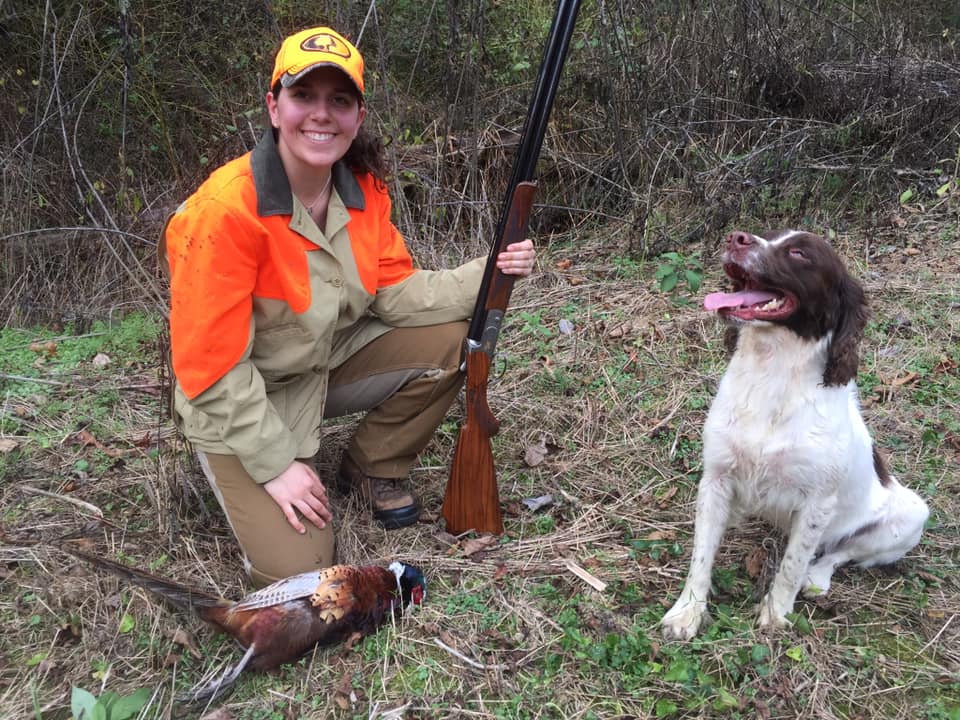
I’m a pheasant hunter in Pennsylvania and I shoot a Syren Tempio 20 gauge. Before I purchased my Syren, I lugged around an 870 Wingmaster. By the end of the day my arms were always very tired from carrying around such a heavy gun. Now I don’t have that problem! It’s also so much easier to bring up to the shoulder when a bird does flush! This picture is from 2017 and is the first pheasant I shot with my Syren over our springer Duke.
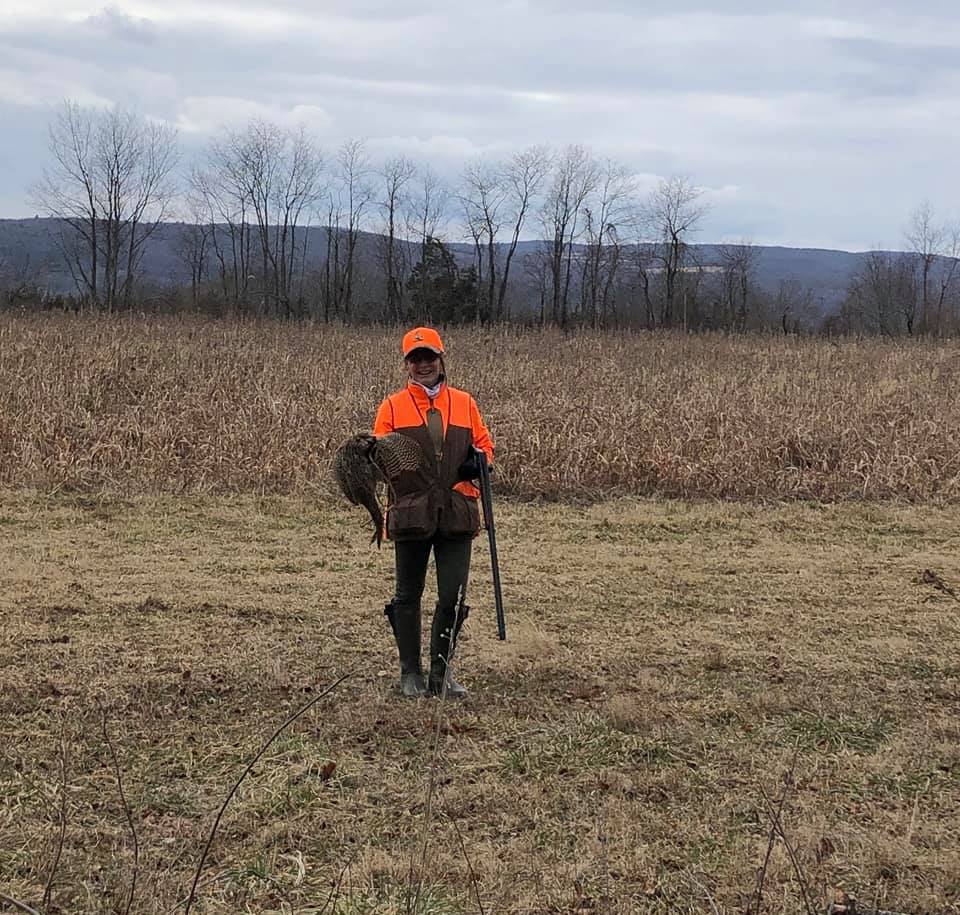
Syren tempio 20g. Pheasant at 65 yards. Best shot of my life (so far).

Sharon Orgeron McCreery: Syren Tempio 20g fun in the field and sporting clays. Great fit, light and beautiful.
Katy Wessel: I just got the Syren Tempio 12 gauge and love it! I always had trouble with the length of pull being too long on other guns I shot. I just got my first sage grouse in Grass Range, Montana, last weekend with it!
The Women's Outdoor News, aka The WON, features news, reviews and stories about women who are shooting, hunting, fishing and actively engaging in outdoor adventure. This publication is for women, by women. View all posts by The WON